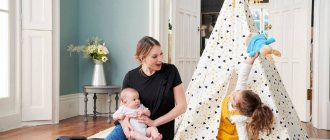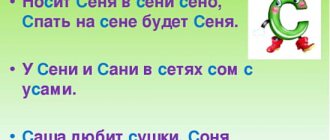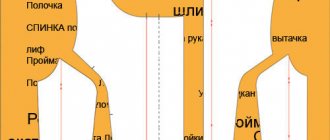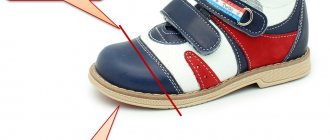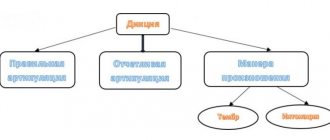How to develop a child's speech
We continue the conversation about the development of a child’s speech , which began in the first part of the article devoted to this problem.
The movements of the body and organs involved in speech production have common mechanisms, therefore the development of fine motor skills of the hands directly affects the development of speech. It is for this reason that finger exercises for the development of speech in children should take a strong place in your activities with your child.
Training finger movements will, as it were, prepare a platform for further speech development. You can start training your baby’s fingers within the first 5 months.
Now let's see how you can help your child master their native speech, teach him correct pronunciation, constructing phrases and forming thoughts.
Remember: classes should be held in the most easy, fun and playful way possible. Then they will bring real benefits and bring real pleasure to both of you.
A set of measures for speech development (to be carried out at home):
- Development of fine motor skills
- Speech gymnastics
- Logorhythmics
We do not mention here such areas of work on speech development as speech therapy massage, special exercises for practicing various sounds, developing phonemic hearing, and some others. They are the area of application of exclusively professional knowledge and skills. Here it is better to trust a specialist rather than try to cope with this task yourself.
Benefits for developing fine motor skills:
- Matryoshka dolls
- Velvet paper
- Plasticine
- Mosaic
- Laces
- Beans, peas
- Semolina
- Salty dough
- Counting sticks
- Multi-colored clothespins
- Beads
- Cloths with sewn buttons
- Stencils
- Massage ball
- Wooden construction sets
Fine motor skills:
- Passive gymnastics - massage for the development of fine motor skills.
- Active gymnastics - games for the development of fine motor skills: poems and nursery rhymes, finger games, finger theater.
For children 6 – 7 years old
As a rule, at this age, all sounds in a child are formed. He says it right. It happens that the sounds “R” and “L” are formed by the age of 6, this is quite normal. By the age of 7, a student should have developed phonemic hearing. If this does not happen, you may have difficulty reading and writing.
Involuntary memory reaches its peak during this period. All words heard by a child are remembered by themselves. I heard it once, repeated it, and started using it in speech. This feature must be used, introducing as many verbs and adjectives into speech as possible.
Exercise “Call me kindly”
You can use different words when doing this exercise.
- Berries
- Raspberry - raspberry
- Strawberry -…
- Strawberry-…
- Blueberry -…
- Blackberry -...
Exercise "What's extra"
Exercise “Find the 4th extra object”
- Car, telephone, tram, bus, plane.
- Mitten, spoon, hat, scarf, pants.
- Chandelier, floor lamp, wallpaper, lamp, sconce, night light.
- Refrigerator, TV, laptop, skirt, iron.
Exercise “Many or One”
- Mitten - mittens
- Sock - socks
- Scissors - ?
- Boot - boots
- Trousers - ?
- Board - boards
Passive gymnastics (massage)
It is better if an experienced professional shows you the massage technique, but you can master the simplest techniques yourself.
The massage is performed with one hand, the other holds the massaged hand. Session duration: 3 – 5 minutes; carried out several times a day.
Massage includes the following types of movements:
- Stroking - performed in different directions;
- Rubbing - differs from stroking with a greater force of pressure (the hand does not slide over the skin, but moves it);
- Vibration - applying frequent blows with the tips of half-bent fingers;
- Massage using a special ball - with the ball you need to make movements in a spiral from the center of the palm to the tips of the fingers; practical advice: you need to use a hard ball, that is, it should not be easily deformed (then the impact will be maximum);
- Flexion-extension of the fingers - the fingers are initially clenched into a fist, each in turn is extended and massaged from the side of the palm in a circular motion from the base to the tip.
When to contact a speech therapist?
Each child is unique, so language development may vary slightly. Usually by the age of 5 the child already knows how to:
- Pronounce all existing sounds. An exception may be hissing ones, rarely “L”.
- Make sentences of 5-7 words.
- Understand the difference between singular and plural.
- Describe things indicating their main qualities and characteristics.
- Conduct a dialogue with peers and adults.
- Quickly say your first, last and patronymic names and your age.
If a 5-year-old child does not know how to do something from the list, it will be useful for him to attend several speech therapist lessons.
Speech therapy classes for children are aimed at increasing vocabulary, developing fine motor skills and proper breathing, and correcting sound pronunciation defects.
It is worth saying that you should not immediately take your child to a speech therapist. Children develop better at home. Here they feel more comfortable.
Active gymnastics: games for developing speech using fine motor skills
Game aids:
- Butterflies made of colored paper
- Leaves of colored paper
- Pinwheel
- Cotton balls
- Paper boat
Games for children from 2 months:
- That's how different they are. Objects of various textures and shapes are placed in the child’s hand. The baby must grab the object and hold it for a while. This exercise develops not only motor skills, but also tactile sensations. It’s good if you comment on what is happening: “This ball is smooth,” “This hedgehog is prickly,” etc.
Games for children from 9 months
- Prefabricated nesting dolls. First you need to collect one doll, then gradually complicate the game; after 2 years it should be a triple matryoshka.
- Pyramids. First you need to use a classic pyramid, the size of the rings of which decreases towards the top.
- Trace along the outline. You need to make cards with images of objects known to the baby, for example, a house, a tree, a car, and paste over their outlines with velvet paper. The essence of the game: an adult guides the baby’s finger along the contour and names the object. Then the outline is covered with beads or peas and the game is repeated.
- Cups and spoons. The child uses a spoon to pour sugar or semolina from one cup to another. You can also transfer beans, peas or nuts by hand.
- Modeling from plasticine. You need to start with a cylinder, and over time complicate the tasks: a ball, a carrot, a snake.
During the games, do not forget to comment on your actions and explain to your child everything that you do.
Games for children from 1 year:
- Strong palms. The child squeezes rubber toys. The best thing is the rubber hedgehog: the needles act like a massager.
- Mosaic. First you need to lay out simple shapes: paths, flowers, squares, and then move on to more complex ones: houses, cars, Christmas trees.
- Constructor. The size of the parts and the complexity of the design depend on the age of the baby: you need to start with the largest parts and the simplest structures, for example, building a turret.
- Beads. The size of the beads also depends on the age of the child. First, instead of beads, you can use balls from pyramids with round parts and string them on a thick cord; then the size of the parts must be gradually reduced, moving on to real beads. For the exercise, medium-sized beads already strung are used. The goal is to teach the child to lay out the outlines of objects from beads. For example, you can lay out a circle, square, heart, spiral, etc.
- Laces. Since lacing has different contents, it makes sense to play with the lacing process - for example, ask the child to sew a dress for his mother (lace-button) or lace shoes (lace-boot).
- Magic tray. Sprinkle a thin layer of semolina onto a tray and run the child’s finger over the cereal. The child is then shown how to draw various shapes. At the age of 2 - 3 years, you can draw numbers and letters.
- Multi-colored clothespins. The essence of the game is to teach the child to independently attach clothespins, and to make the game interesting, you can do this according to a thematic principle: rays to the sun, needles to the hedgehog, rain to the cloud, grass to the ground. Of course, for this you first have to make preparations. This is a rather difficult task for a child. Don't try to achieve results right away. To begin, take the baby’s hands in yours and do the exercise with him.
- Cinderella. You need to mix white and red beans and ask your child to sort them by color.
- Funny pictures. Spread the plasticine evenly over a sheet of cardboard and show your child how to lay out drawings using peas.
- Counting sticks. Show your child how to use counting sticks to lay out different shapes. It is advisable that the counting sticks are not smooth, but ribbed: this serves as an additional massage for the fingers.
- Little sculptor. Dough modeling (dough recipe: 1 cup flour, 1/2 cup salt, a little water). The advantage of dough over plasticine in this case is that the crafts can subsequently be used as toys.
- Fasten the button. You will need two pieces of thick fabric. On one of them, sew three buttons of different diameters, in the second, cut loops of appropriate size. First, show your child how to fasten the buttons, commenting on your actions: “We insert the large button into the large buttonhole, the medium button into the middle one, and the small button into the small one.” Then take the child's hands in yours and repeat the exercise. After this, you can invite the baby to try to fasten the buttons on his own. Don’t insist if the baby doesn’t want to or if he can’t do it. This is a very difficult exercise and requires practice to perform successfully.
- Stencils. It is recommended to start with stencils for internal tracing (it is easier for a child to trace inside than outside) and with the simplest shapes (circle or square). Practical advice: you can buy ready-made stencils, but it is better to make them yourself. The fact is that most standard stencils are small in thickness, and it is inconvenient for a child to trace them, since the pencil keeps slipping off. Therefore, the stencils must be quite voluminous. A good solution is to cut them out of a piece of linoleum or a shoebox.
For children 1 – 2 years old
At the age of 1 to 2 years, children, as a rule, already try to imitate the speech of adults. Kids have the following skills:
- Ability to repeat open syllables. For example, they will not be able to pronounce the word “give” clearly, but the sound “dya” is familiar to our ears.
- There is a repetition of sounds and syllables - imitation of animals.
- Expressing emotional state through intonation.
- Some objects and actions can be denoted using syllables.
- Catch and perceive adult speech. Ability to point to objects.
Parents not only need to competently construct speech statements, pronounce words correctly and clearly when addressing their child, but it is also important to competently plan and organize children’s leisure time, and exercises for speech development in children 1–2 years old will help you with this.
Children who cannot yet stand or walk independently will need adult help. These games will not only have a beneficial effect on the baby’s speech ability, but will also strengthen the muscles of the body.
Games - nursery rhymes
Taya, shake your hands, (Shak your hands) And also wave your palms. (Waving) Fingers hid in fists. (Hide our fingers) We'll put our fists in barrels. (we clasp our hands into fists to our sides) Stomp our feet. (We stomp) Let's clap our hands. (Clap) Let's stamp with our right foot. (Stamp) Let's stamp with our left foot. (Let's stomp) And let's go and dance in a squat, like a flock of goslings. (We walk on our haunches) We stomp our feet like this (We stomp) Top - stomp, stomp - stomp. So let's clap our hands (Clap) Clap - clap, clap - clap. So let's shake our heads Oh - oh, oh - oh. This is how we lift our legs (Raise our legs) High - high. This is how we lower the legs (Lower the legs) Low - low. This is how we lift our arms (Raise our arms) High - high. This is how we lower the handles (Lower the handles) Low - low.
Crow - magpie (we move along the baby’s palm) Cooked porridge, fed the kids. I fed this one (Bend my thumb) I fed this one (Bend my index finger) I fed this one (Bend my middle finger) I fed this one (Bend my ring finger) But I didn’t feed this one! (Slightly shake the little finger) He was a small finger and behaved like a limp one.
My friend, quickly my friend, (Imitate making a snowball) Throw me your snowball! (Throw a snowball) I catch it quickly (Catch a snowball with my hands) And roll it quickly (Roll a snowball) Look at the bullfinches (Look around)
Their breasts are the reddest of all. (Stroke ourselves on the chest) One, two, three, four, five. We go out into the forest for a walk. (We walk in place) Let's look around. (We look around) A good bear is walking there. (We point with our hand to the side) You are a little bear, wait, (We call the bear with both hands) Take us with you into the forest. Feed me some sweet honey! Little finger, where are you going? (Touch the little finger) You’re wandering past with this brother! (Touching the nameless one) With this, you enter a dense forest. (Touch the middle one) With this you walk in the meadow, (Touch the index finger) You call together gray ducks. With this, he ran past (Touching the big one) And ran into the ditch. (Draw between thumb and index)
Read more: What can we learn from our children?
Finger - boy - mischievous. (We stretch our fingers one by one) Where did you suddenly come from? I visited the brothers. I rested there with grace. With this we go fishing, With this we dance in circles, With this we run in the morning, With this we always have fun.
Simple exercises
Children who are just learning to pronounce sounds will benefit from special exercises for speech development, which should be given 15 to 20 minutes a day:
1. Show kids how to express emotions with sounds.
- Surprise: “OH!”
— Dissatisfaction: “AY – YAY!”
- Disappointment: “AH!”
2. While playing hide and seek, change the pitch of your voice.
While in another room, make a sound: “AU” at first quietly, then louder and louder. The little one will quickly understand the rules of the game and try to repeat after you.
3. When using any objects, clearly pronounce their names.
4. Let your child drink liquids using a straw. This promotes the development of the articulatory apparatus.
5. Let your baby experience toys of different textures: hard, soft, wet, wet dry, fluffy, smooth.
6. Praise your child if he tries to interact with older kids.
7. Play a round table game with your children. Collect all your child’s favorite toys and feed them, saying the following words:
— How does a dog ask you to eat? "AB - AB."
- Let's feed the dog. How does a dog eat? "OM-NOM-NOM".
Logorhythmic chants “Beetles”, “Sly Fox”, etc. At this age, children especially like them and are easy to remember. And in combination with melody and characteristic movements, they develop the speech center and coordination.
Find the parts of the case
All children under three years of age should know all parts of the body. Playing with a doll will help kids remember, or you can show body parts on yourself and ask the child to repeat. At the same time, it is important not to lose sight of the sides: right, left; directions: below, above.
Sample of an educational song for kids “Left-Right” in the video:
Finger Theater
Finger theater is an exciting game that:
- Stimulates the development of fine motor skills;
- Introduces the child to the following concepts of shape, color, size;
- Helps develop spatial perception (the concepts of “right”, “left”, “next to each other”, etc.);
- Develops imagination, memory, thinking and attention;
- Helps develop vocabulary and activates speech functions;
- Forms creative abilities and artistic skills;
- Introduces basic mathematical concepts.
For children aged 1 – 2 years (using the example of the fairy tale “Kolobok”):
- First, introduce your child to the characters in the fairy tale. Invite your child to look at and touch the figures. Then put each character on your finger in turn and describe it.
- Introduce your child to the name of each finger on his hand. For example, you can say this: “I have a Kolobok sitting on my index finger.”
- Then act out a fairy tale for your child. Place the characters on your fingers and cross your arms. Start telling the story, raising your fingers with the characters as the action progresses. For example, the fairy tale “Kolobok” can be told as follows. Thumbs up with Grandma character. Tell your child that today this hero will bake Kolobok. Rhythmically tap the heels of your palms against each other without releasing your fingers. At the same time, say: “Grandma is kneading the dough.” Using the same principle, play up the appearance of each character.
For children aged 2 – 4 years (using the example of the fairy tale “Kolobok”):
- Ask your child if he remembers the fairy tale “Kolobok”. Remind him if necessary.
- Then ask your child to place the characters on the table in the order they appear in the story. At the same time, ask to characterize each of them according to the principle: “Grandma is old, kind, caring; Kolobok is round, ruddy, mischievous,” etc.
- Ask your child questions about the fairy tale. For example: “Why did grandma decide to bake Kolobok? Why did he leave his grandmother and grandfather? Who did he meet on the way?
- Then act out a fairy tale in front of the little spectator using a finger theater.
- At the end, ask your child to act out a fairy tale in front of you using a finger theater. If necessary, prompt him.
For children 3 – 4 years old
Children aged three to four years are characterized by knowledge not only of nouns and verbs, but also of adverbs: here, there. They can compose a sentence consisting of 3–4 words. Speech must be literate, without defects. Normally, the correct pronunciation of sibilants is both at the beginning, in the middle, and at the end of a word and when two consonants meet with a confluence.
Articulation gymnastics
The muscles of the tongue must be in a certain tone to pronounce sounds because for whistling sounds the tongue must rest against the lower teeth. For hissing words, as well as “p”, “l”, it should occupy the top position.
- Exercise hill for whistling
- Pendulum exercise.
- Blow into a glass of water through a straw.
Children 3–4 years old have shallow diaphragmatic breathing. Therefore, one of the main tasks is to work on breathing.
Find a fruit, vegetable
Games and exercises aimed at pronunciation of fruits, vegetables, and berries will help not only teach how to name words correctly, but will also significantly increase the vocabulary of preschoolers by describing the appearance of the fetus: shape, color.
Soft and hard objects
The game contributes to the formation of children's worldview about hard and soft objects of inanimate nature and the enrichment of vocabulary.
The little one takes objects from the box one by one and names its properties. You can complicate the task by asking them to also name the color of the object.
Finger games for speech development
The essence of the finger motor skills lesson is to teach the child to use his fingers to depict some objects or living beings. In this case, all finger movements must be explained to the baby. This will help the child understand concepts such as “top”, “bottom”, “right”, “left”, etc. After the child learns how to do the exercises himself, you can try to act out scenes or short fairy tales, distributing the roles among yourself and your little actor (for example, a meeting between a hedgehog and a bunny in the forest). Here are some examples of such exercises.
- Finger game “Bunny”. The index and middle fingers are straightened, the rest are clenched into a fist. Little man. “Run” with your index and middle fingers on the table. Finger game “Hedgehog”. Clasp your hands, straighten the fingers of one hand and the thumb of the other. Cat. Connect the middle and ring fingers with the thumb, raise the index and little fingers up. Horned goat. The index and little fingers are straight, the thumb is on the bent ring and middle fingers. Butterfly. Cross your hands at the wrists and press your palms with the backs of your hands facing each other, fingers straight; palms with straight fingers make slight movements in the wrists - “butterfly flies.” Glasses. Fold the fingers of your right and left hands into rings and bring them to your eyes.
In addition to these examples, you yourself can come up with many interesting and entertaining exercises for your child to develop speech.
For children 4 – 5 years old
When communicating with children 4–5 years old, adults should no longer experience difficulties in understanding. The speech of preschool children is usually fully developed. All requests and tasks must be understood. An adequate response to questions is formed.
At the age of 4–5 years, the ability to pronounce complex words and sentences improves. It is during this period that effective word creation and attempts at rhyming arise.
Upon reaching the age of four, a child’s vocabulary is 2000 words. By the age of five, the dictionary contains about 3,000 terms. The number of abbreviations is significantly reduced, as well as various rearrangements and omissions. Synonymous words are formed.
Retelling fairy tales
When retelling, it is important to draw the child’s attention to the intonation of the voice. Ask where it is necessary to make a loud statement, and where it is necessary to say it quietly.
Recommended fairy tales: “Masha and the Bear”, “The Three Bears”, “Kolobok”, “Teremok”, “Ryaba the Hen”, “Turnip”.
Word game
Parents ask the child to pronounce words containing a certain sound.
Example with the sound “es”: sled, scooter, son, catfish.
Puppet show
At this age, children willingly watch theater, but it will be much more exciting and interesting if a preschooler tries to play a certain role in the theater or control his favorite puppet character.
Read more: How to prevent suicidal thoughts in a child?
Children aged 4-5 years begin to develop an interest in gadgets. Special computer games have been developed for speech development.
But you need to know when to stop. And you can’t turn a child into a gamer.
Teenagers and speech
At school age, clarity of communication and the ability to formulate and express thoughts are of decisive importance. Tongue twisters and learning a large number of poems will help develop diction in teenagers.
To formulate thoughts and express them, a teenager needs to be given the opportunity to communicate in the family, speak in front of an audience, consult and listen to the opinion of the growing person. Of course, reading books at any age has an invaluable influence on speech development.


